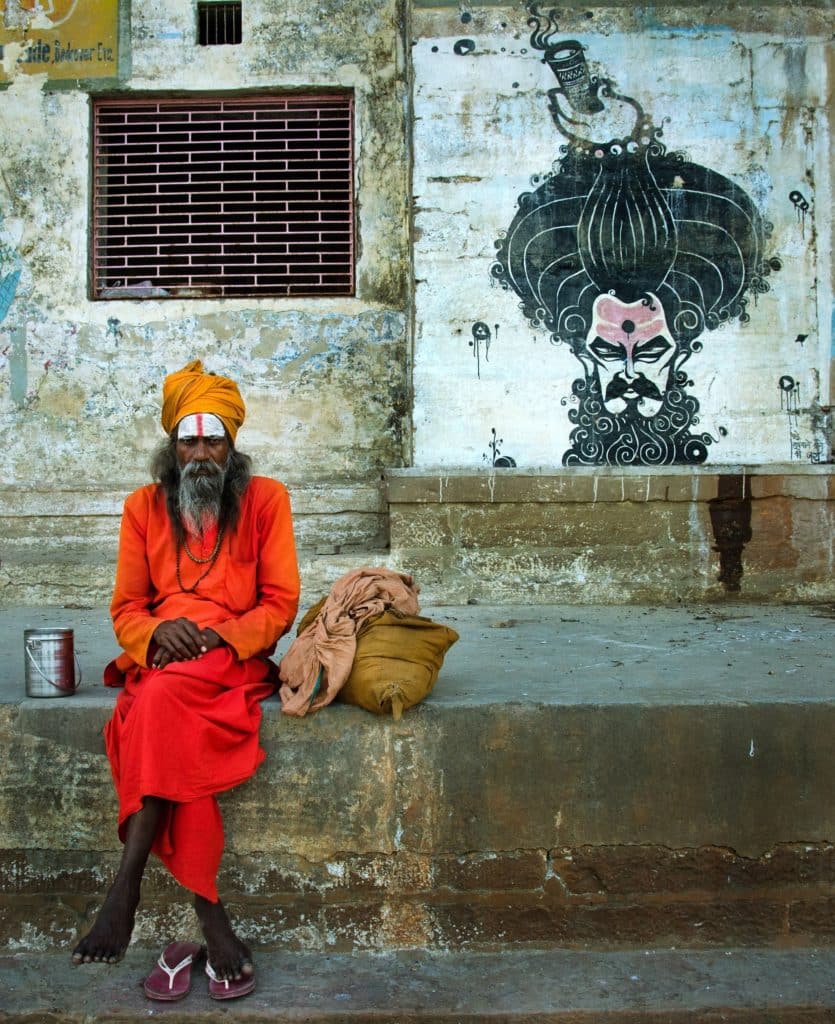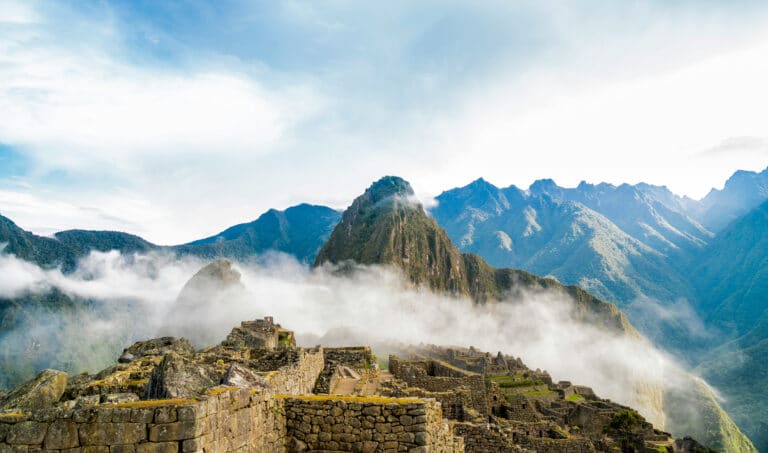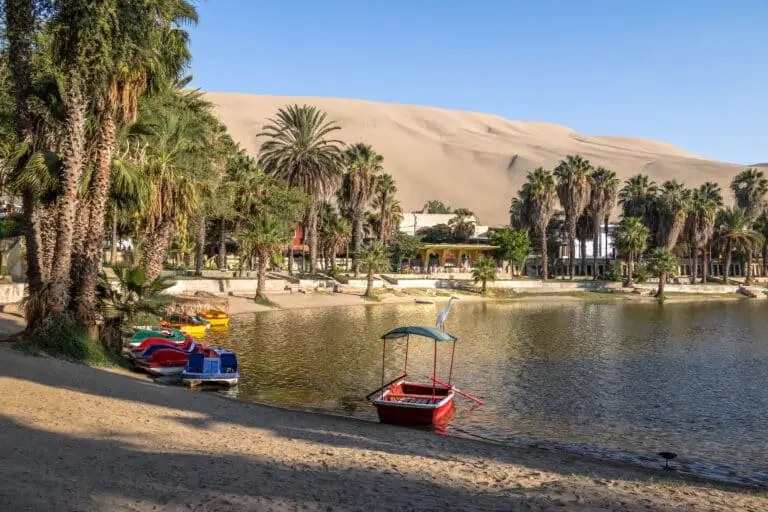BREAKING NEWS: India is a country of staggering size and kaleidoscopic diversity. It offers a cultural intensity that’s as overwhelming as it is enchanting. It stretches 2000 miles from the snow-capped Himalayas in the north to the sun-washed beaches of the south. OK, maybe not breaking news. Perhaps I have only stated the obvious!
North India vs South India: Why Choose Just One?
Given its vast expanse and rich cultural tapestry, travelers wanting to visit often find themselves at a crossroads, having to make a decision between North India vs South India for financial or time reasons. This decision is not trivial, as each half presents a uniquely captivating experience.
We want to make this decision easier by comparing and contrasting the distinct flavors of North and South India. We’ll explore what makes each region stand out and attempt to identify the type of traveler who would most enjoy and benefit from the experiences each has to offer. Whether you’re a history buff, a nature enthusiast, a culture seeker, or a leisure traveler, this guide will help you decide which part of India’s vibrant mosaic resonates more deeply with your travel aspirations.

The Real Reason for any trip: Food!
While I don’t have the data to prove that this applies to every traveler, I can say with 100% certainty that a big part of any trip I take is the excitement around new kinds of food & the experiences that come with those meals. So we start there!
The Cuisines of North and South India
The culinary evolution of North and South India is a narrative of diversity and distinctiveness. Northern Indian cuisine has been heavily influenced by the historical invasions of Central Asians and Persians, particularly during the Mughal era. This influence brought a fusion of flavors and techniques, introducing dairy, wheat, and a variety of meats to the region. The Mughals were instrumental in popularizing rich, aromatic dishes that were heavy in gravies and included an array of breads.
Conversely, South Indian cuisine is deeply rooted in the Dravidian culture, largely untouched by foreign influences. It is predominantly based on rice and lentils, with a strong emphasis on vegetarian dishes, though seafood is prominent in coastal areas. Unique ingredients like tamarind and coconut and techniques such as fermentation and steaming are characteristic of this region. South Indian dishes, therefore, have a distinct tangy and spicy flavor profile.
While North Indian cuisine finds parallels in Middle Eastern and Central Asian food traditions, South Indian cuisine stands apart with its unique flavors and techniques. The North is known for its creamy, slow-cooked curries and a variety of breads, contrasting with the South’s lighter, tangier, and often spicier dishes. This divergence not only reflects the varied historical influences but also the regional ingredients and cultural preferences that shape the culinary identity of each region.
North India vs South India: A tale of their cities

North India: The Golden Triangle and Beyond
North India’s tourism magnetism is epitomized by the Golden Triangle, comprising Delhi, Agra, and Jaipur. Delhi, the nation’s capital, is a melting pot of cultures, histories, and cuisines. It attracts history enthusiasts and urban explorers with landmarks like the Red Fort and India Gate. Agra, world-renowned for the Taj Mahal, appeals to romantics and architecture lovers. Jaipur, the Pink City, is a haven for those interested in royal history, evident in its forts and palaces like the Amer Fort and Hawa Mahal.
Varanasi, another gem, is a spiritual heartland ideal for those seeking cultural immersion. The city’s ghats and the Ganges river offer a unique blend of spiritual and historical experiences.
This region is perfect for cultural enthusiasts and history buffs. The Golden Triangle, with its rich history, architectural marvels, and vibrant bazaars, offers a quintessential Indian experience. Varanasi adds a spiritual dimension, making this route ideal for those seeking a deep dive into India’s historical and cultural richness.

South India: from beach bums to tech geeks… and maybe Mumbai
South India, a region rich in diversity and culture, offers an array of destinations that cater to a wide spectrum of interests. From the tech and history-rich environments of Bangalore and Hyderabad to the tranquil backwaters of Kerala, and the lively beaches of Goa, each city has its unique charm.
Bangalore, often referred to as India’s Silicon Valley, and Hyderabad, with its fascinating blend of modernity and historical legacy, attract a mix of technology enthusiasts and history buffs. Attractions like Bangalore’s Lalbagh Botanical Garden and Hyderabad’s Charminar offer glimpses into the region’s rich heritage and technological advancements.
Kerala, known for its picturesque backwaters, is a haven for those seeking tranquility and a connection with nature. The cities of Kochi and Alleppey serve as gateways to this serene world, where houseboat stays provide a unique experience of Kerala’s natural beauty.
Goa, meanwhile, is the go-to destination for beach lovers and party-goers. Its sun-kissed beaches, vibrant nightlife, and Portuguese heritage create a lively and culturally rich atmosphere.
For those exploring South India, considering a detour to Mumbai can significantly enhance the travel experience. Mumbai, located on the west coast, is a bustling metropolis, contrasting the laid-back vibe of South India. As the financial and entertainment capital of India, it offers an array of attractions, from the iconic Gateway of India and Chhatrapati Shivaji Maharaj Terminus to the vibrant Marine Drive. The city’s diverse culinary scene mirrors its cultural mosaic, offering everything from street food to upscale dining experiences. For Bollywood enthusiasts, Mumbai is the heart of India’s film industry, while history buffs can enjoy a visit to the nearby Elephanta Caves, a UNESCO World Heritage Site.
The ideal traveler for South India and Mumbai varies greatly, from tech and history enthusiasts to nature lovers, beachgoers, and urban explorers. This region, with the potential addition of Mumbai, promises a journey through India’s diverse landscapes, cultures, and histories, offering something unique for every type of traveler.
If I am going to India, don’t i have to do yoga?
Yoga and Wellness Retreats: North India vs. South India
Yoga, an ancient physical, mental, and spiritual practice, has its roots in India, dating back over 5,000 years. Integral to Indian culture, it seeks to harmonize the body with the mind and breath through various breathing exercises, yoga postures, and meditation. Today, India remains a hub for yoga and wellness enthusiasts, with distinct offerings in its northern and southern regions.
In North India, the practice of yoga is often intertwined with spiritual and cultural exploration. The region is home to Rishikesh, often hailed as the ‘Yoga Capital of the World’. Nestled in the Himalayan foothills, Rishikesh offers a serene environment ideal for yoga and meditation, with numerous ashrams and yoga institutes. The wellness retreats here often combine yoga with exploration of Hindu spiritual practices, Ayurvedic treatments, and Ganges river rituals.
South India, known for its lush landscapes and tranquil beaches, offers a different wellness experience. The emphasis is more on holistic health and Ayurveda, the traditional Indian system of medicine. States like Kerala are renowned for their Ayurvedic retreats that offer therapeutic massages, detoxification programs, and customized diets alongside yoga. The yoga practiced here often incorporates more gentle and restorative forms, in harmony with the serene environment.
While both regions offer exceptional yoga and wellness experiences, the choice depends on individual preferences. For those seeking a more spiritual journey intertwined with yoga, North India, particularly Rishikesh, is ideal. However, if a holistic health approach in a tranquil setting is more appealing, then South India, especially Kerala, would be a better choice. Both regions, with their unique landscapes and cultural backdrops, provide unparalleled opportunities to delve into the world of yoga and wellness.
What if i just need a little time outside?

North India: A Realm of Mountains and Rivers
North India is characterized by its diverse topography which includes the majestic Himalayan mountain range, fertile plains of the Ganges, and the arid Thar Desert. This region is a paradise for nature lovers and adventure enthusiasts.
The Himalayas: Home to the world’s highest peaks, including Mount Everest and K2, the Himalayas offer breathtaking views, trekking opportunities, and hill stations like Shimla and Manali. These areas are perfect for hiking, mountaineering, and experiencing snowfall.
The Ganges Plains: The plains are dominated by the sacred Ganges River, providing fertile land for agriculture. Cities like Varanasi and Haridwar on the riverbanks are significant pilgrimage sites with rich cultural heritage.
The Thar Desert: The desert in Rajasthan offers a starkly beautiful landscape. Attractions include camel safaris in Jaisalmer, the vibrant city of Jaipur, and the Ranthambore National Park, known for its tiger population.

South India: Coastal Beauty and Lush Greenery
South India, in contrast, is known for its lush green landscapes, backwaters, and beautiful coastline along the Arabian Sea, Bay of Bengal, and Indian Ocean.
The Western Ghats: This mountain range is a UNESCO World Heritage site, known for its biodiversity. Hill stations like Ooty and Munnar are famous for their tea plantations and serene beauty.
The Backwaters of Kerala: A network of interconnected canals, rivers, lakes, and inlets, these backwaters are a unique feature of Kerala. Houseboat cruises in Alleppey offer a tranquil experience amidst the paddy fields and coconut groves.
The Coastal Region: The long coastline boasts beautiful beaches such as Goa’s beaches, known for their lively atmosphere, and the more tranquil beaches of Kerala and Tamil Nadu.
Both regions offer distinct experiences: North India appeals to those seeking adventure, spiritual journeys, and a taste of India’s historic grandeur, while South India is perfect for those looking for tranquil natural beauty, wildlife, and a relaxed coastal vibe. Each region, with its unique geography, provides a plethora of options for travelers seeking natural wonders and scenic beauty.








